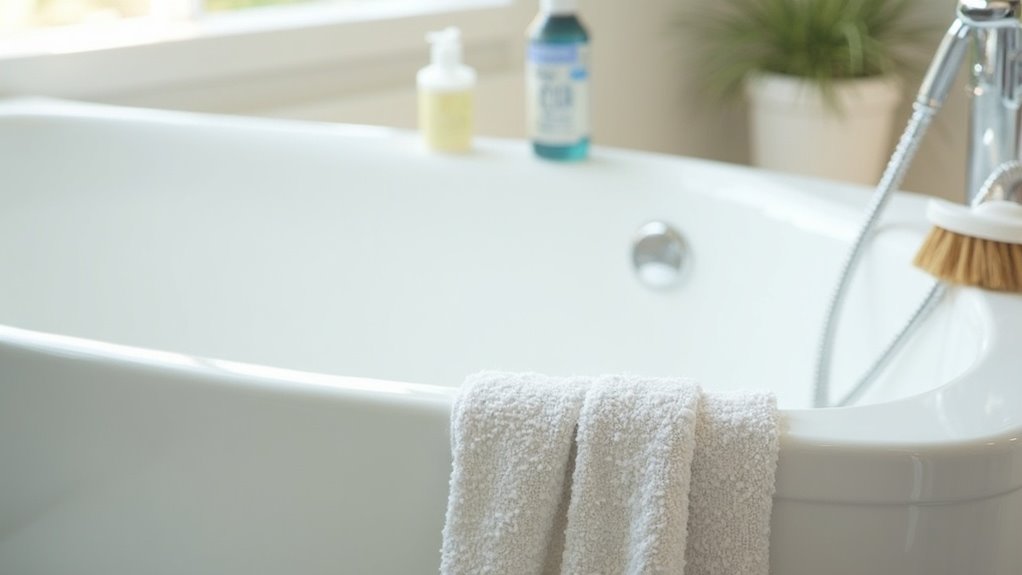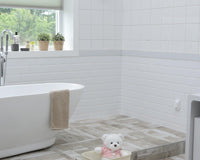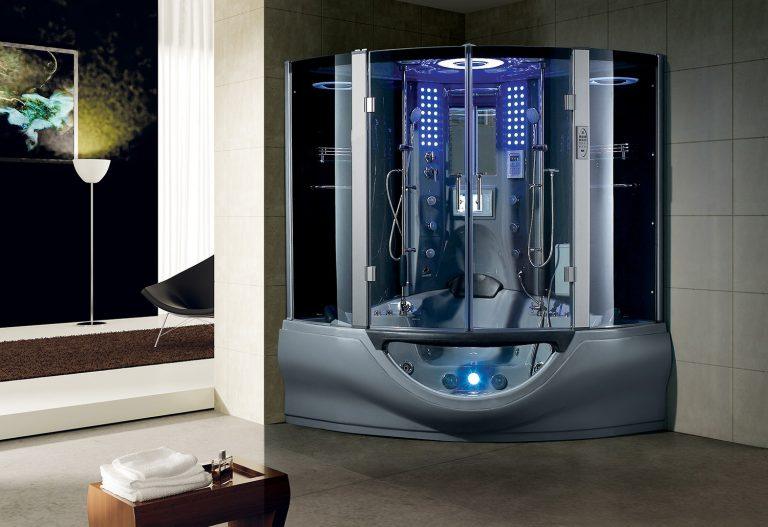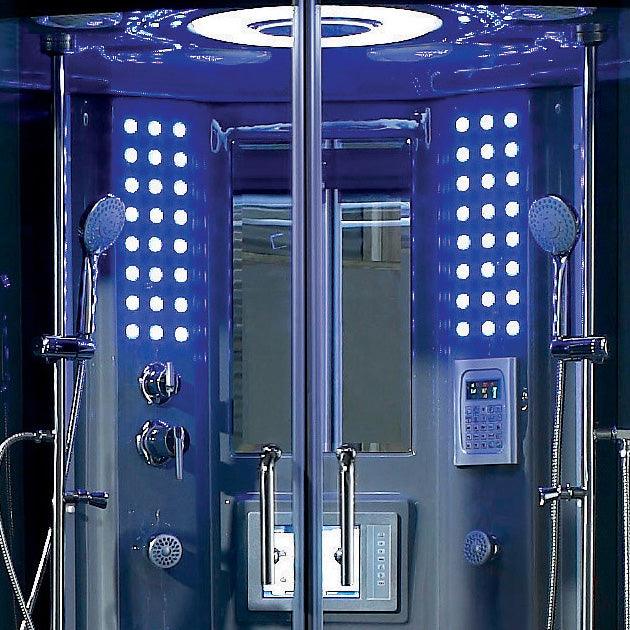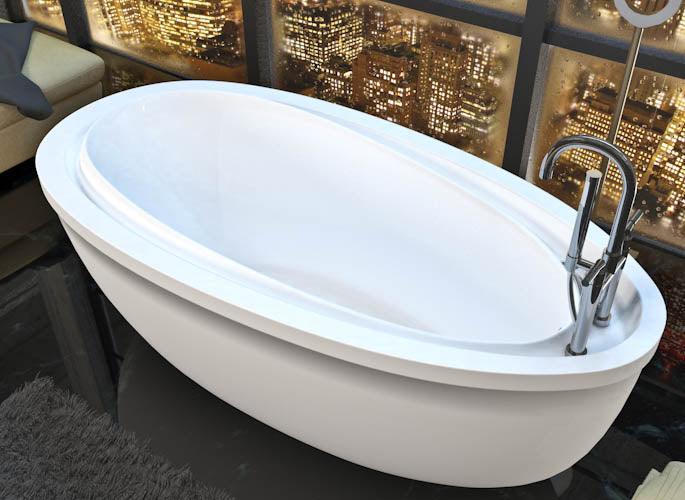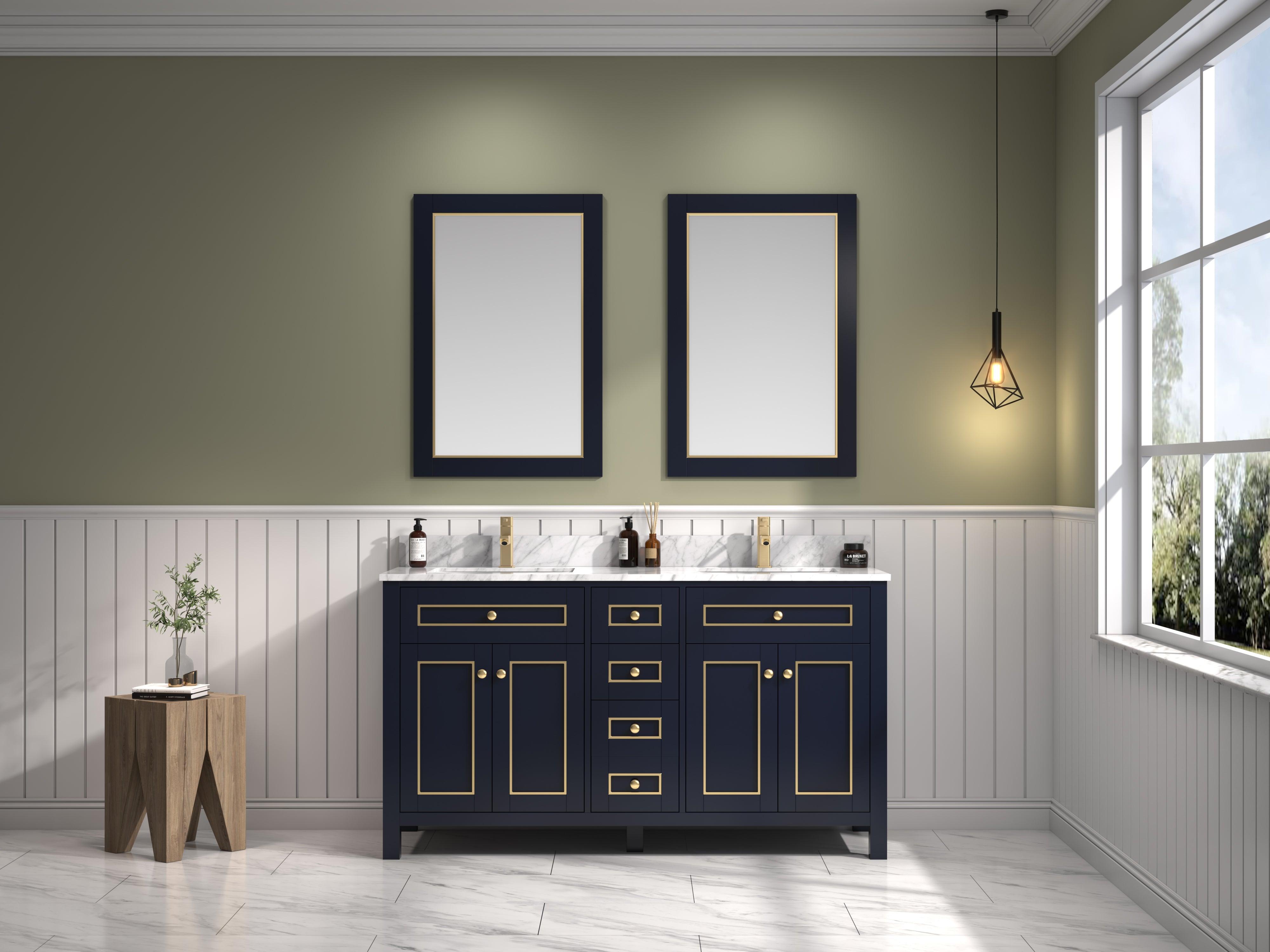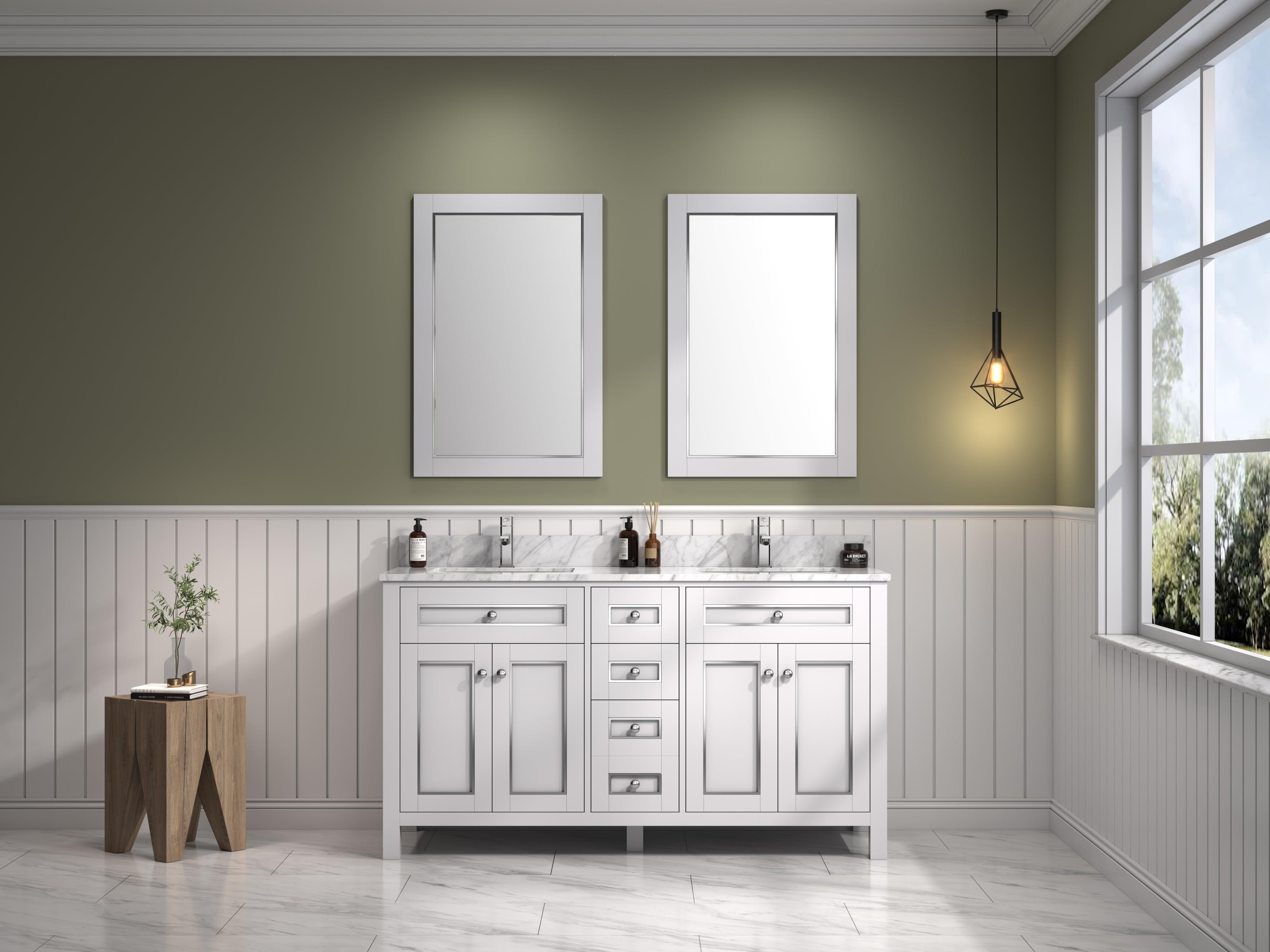While your bathtub may seem like a low-maintenance fixture, neglecting its upkeep can lead to costly repairs down the line, whereas regular care can extend its lifespan considerably. You likely clean your shower walls and floor after each use, but how often do you actually scrub the tub itself? Establishing a consistent cleaning routine is key to preventing grime buildup, mildew, and soap scum damage. By taking proactive steps, you'll not only preserve your tub's appearance but also prevent hidden issues from arising – issues that could silently compromise the integrity of your bathtub.
Understanding Bathtub Refinishing Process
When considering a bathtub refinishing project, understanding the process is vital to achieving the desired results. You're about to give your tub a fresh new look, and you want to make certain it's done right.
Bathtub refinishing involves applying a new, durable coating over the existing tub surface to restore its appearance and eliminate imperfections. The process is typically completed within a day, minimizing disruption to your daily activities.
To guarantee a successful refinishing project, proper preparation is key. You'll need to clean and repair any surface damage before the new coating is applied. This makes certain the new coating adheres properly and lasts longer.
After the refinishing process, it's important to follow post-refinishing care tips. You'll need to avoid using the tub for 48 hours to allow the new coating to cure properly and achieve ideal durability.
Benefits of Regular Maintenance
When you prioritize regular bathtub maintenance, you can greatly extend the lifespan of your tub by preventing deterioration caused by soap scum, mineral buildup, and water damage.
Consistent cleaning and inspection help identify and address minor issues early, reducing the risk of costly repairs or replacements.
Extending Bathtub Lifespan
Regular maintenance is key to extending the lifespan of your bathtub, with daily rinsing and weekly cleaning routines playing an essential role in preventing soap scum buildup and surface damage.
By incorporating proper care into your routine, you'll keep your bathtub looking its best and prevent costly repairs down the line. Weekly maintenance is important in removing dirt, grime, and mildew that can compromise the integrity of your tub.
Consistent upkeep also enhances the aesthetic appeal of your bathtub, making it a more enjoyable space to relax and unwind.
Additionally, regular maintenance contributes to a safer bathing experience by reducing slip hazards associated with grime and mildew accumulation.
By staying on top of maintenance, you'll be able to identify and address minor issues before they escalate into major problems.
This proactive approach won't only save you money but also guarantee your bathtub remains a comfortable and clean space for years to come.
Preventing Damage Issues
Effective maintenance is essential in preventing damage issues that can compromise the integrity and longevity of your bathtub. By adopting proper cleaning habits, you can considerably reduce the risk of surface damage and wear.
Regularly washing your tub with non-abrasive products and rinsing it daily prevents the buildup of soap scum and mildew, which can lead to discoloration and surface damage over time.
You should also conduct monthly inspections to catch minor issues, such as cracks or leaks, before they escalate into costly repairs.
Proper maintenance also involves maintaining good ventilation in your bathroom to minimize moisture buildup, reducing the risk of mold growth that can weaken tub materials.
By implementing a routine cleaning schedule, you can extend the lifespan of your tub. Proper maintenance not only saves you money but also guarantees your bathtub remains aesthetically appealing and functional for years to come.
Cleaning Routine and Frequency
You'll want to establish a daily cleaning routine to prevent soap scum, oils, and residues from accumulating on your bathtub's surface.
Each day, use a soft cloth or sponge to wipe down the bathtub after use, removing any visible debris and excess water with a squeegee.
Daily Cleaning Routine
Maintaining a clean bathtub begins with a daily routine that's simple yet effective. By incorporating daily cleaning into your routine, you'll eliminate soap scum and prevent buildup, ensuring a cleaner surface for the next use.
To do this, rinse your tub thoroughly after each use, paying particular attention to areas around the drain and faucet. Using a removable showering wand can facilitate thorough rinsing, allowing for effective removal of residues and enhancing overall hygiene.
When rinsing, use lukewarm water, as it effectively dissolves residues without causing thermal shock to the tub materials. Immediate rinsing after use can save time and effort, making weekly scrubbing easier by reducing the amount of grime that accumulates.
Consistent daily rinsing contributes to maintaining the aesthetic appeal and cleanliness of the tub, ultimately prolonging its lifespan. By committing to this simple daily routine, you'll be able to enjoy a cleaner, healthier bathtub for years to come.
Weekly Scrubbing Tips
Your bathtub's weekly scrubbing routine plays an essential role in removing soap scum and preventing buildup that can damage its surface over time.
To maintain your tub's shine and hygiene, use a mild acrylic-friendly cleanser and a soft sponge or cloth for scrubbing. Avoid using harsh chemicals or abrasive materials like steel wool, as they can scratch delicate finishes.
Scrub your tub thoroughly, paying attention to areas with visible buildup. Rinse the tub thoroughly with warm water to remove all cleaning residues.
Consistency in your weekly scrubbing routine will preserve the aesthetic appeal of your tub and extend its lifespan by preventing grime and stain accumulation.
In addition to your weekly scrub, incorporate a quick daily rinse after each use to reduce the frequency of scrubbing needed.
By following these weekly scrubbing tips and maintaining a consistent cleaning routine, you'll be able to keep your bathtub clean, hygienic, and in good condition for years to come.
Regular maintenance will also make future cleaning tasks easier and more manageable.
Safe Cleaners and Stain Removal
Effective bathtub maintenance hinges on the use of safe cleaners and stain removal techniques to preserve the tub's finish and extend its lifespan. When it comes to cleaning your tub, you'll want to use mild dish soap and water, which are suitable for most tub materials.
For tougher stains, natural cleaners like baking soda and vinegar are effective without damaging the surface. Avoid harsh chemicals like bleach and ammonia, as they can erode protective finishes and lead to premature wear.
To remove stubborn stains, create a paste with baking soda and water, apply it to the stain, and let it sit for 15-20 minutes before scrubbing. For mineral deposits, use full-strength white vinegar. You can also add essential oils for a pleasant fragrance.
Remember to always rinse surfaces thoroughly after cleaning to eliminate any residual cleaning agents that could harm the tub's finish over time.
Preventing Stains and Mildew
After tackling tough stains and mastering safe cleaning techniques, preventing their return is the next step in maintaining a pristine bathtub. To prevent stains, you'll want to focus on reducing moisture buildup, which creates an ideal environment for mildew growth. One effective way to do this is by regularly using a squeegee to wipe down tub walls after each use. This simple habit markedly reduces moisture levels, making it harder for stains and mildew to form.
Proper ventilation is also essential in minimizing humidity levels that contribute to mold and mildew formation. Make sure you're using your exhaust fan during and after bathroom use to keep the air circulating.
Additionally, promptly clean up spills from hair dyes, soaps, and other products to prevent staining and discoloration on tub surfaces. Installing a water softener can also help combat hard water deposits, which often lead to unsightly stains and mineral buildup.
Proper Drain Maintenance Tips
Clogged drains can quickly become a nuisance, disrupting your bathing routine and potentially causing damage to your bathtub. To prevent this, you'll want to prioritize proper drain maintenance. Start by installing drain covers to catch hair, soap scum, and debris, guaranteeing smooth drainage and preventing clogs.
To maintain your drains, perform monthly maintenance using a mixture of boiling water, baking soda, and vinegar. This breaks down buildup and keeps drains flowing freely.
Every few months, utilize a zip-it tool to remove hair accumulation from drains, a common cause of blockages. For severe clogs, consider using a mechanical snake or plunger before turning to chemical solutions, which can damage pipes over time. Avoid using chemical solutions whenever possible, and instead opt for professional help if needed.
Regularly check and clean the drain trap to remove debris and guarantee peak drainage performance. Proper ventilation is also key to maintaining a healthy drainage system.
Protecting the Bathtub Surface
As you focus on protecting the bathtub surface, preventing scratches becomes a top priority.
You can minimize the risk of scratches by avoiding standing in the bathtub and using non-slip pads or shelves for bottles and containers.
Preventing Bathtub Surface Scratches
Preventing bathtub surface scratches is an essential aspect of bathtub maintenance that helps maintain the tub's aesthetic appeal and durability. To achieve this, you need to take protective measures that minimize direct contact between items and the tub surface.
Avoid using the bathtub as a standing surface for items like bottles or containers, as this can lead to scratches and dents on the surface. Instead, use non-slip pads or shelves in the tub to prevent items from causing scratches.
Regularly applying a protective wax coating on fiberglass or acrylic tubs every 2-3 months can also enhance the surface's durability and prevent scratches.
When installing grab bars and non-slip appliques, do so carefully to avoid causing damage to the bathtub surface. A routine inspection of the tub is also fundamental in identifying any signs of scratches or damage.
Maintaining Non-Slip Bathtub Coatings
You've taken steps to prevent bathtub surface scratches; now, it's time to focus on maintaining the non-slip coatings that provide enhanced safety for bathtub users. Non-slip coatings are especially important for households with children and the elderly, as they reduce the risk of slips and falls.
To maintain these coatings, you should avoid using abrasive cleaning tools, which can wear down the coating and reduce its effectiveness over time. Instead, use gentle, non-abrasive cleaners to remove residues without compromising the integrity of the non-slip coating.
Regularly inspect the coating for signs of wear or damage and make prompt repairs to prevent further deterioration. Consider applying a protective wax coating specifically designed for non-slip surfaces to help maintain their texture and prolong the lifespan of the coating.
Long-Term Care Strategies
Proactive maintenance is key to extending the lifespan and functionality of your bathtub. Regular inspections are essential for identifying cracks, peeling, or warped areas early on. By catching minor damages before they escalate into major repairs, you'll save time, money, and prevent headaches down the line.
To carry out these inspections effectively, establish a consistent cleaning schedule that involves more than just scrubbing away at the tub's surface. Caring for your bathtub requires a multifaceted approach that incorporates routine maintenance tasks, such as re-caulking around the tub every few years. This prevents moisture seepage and reduces the risk of mildew growth, enhancing the tub's longevity.
Additionally, applying fresh enamel or gel coating can rejuvenate surfaces and extend the life of the tub. By integrating these tasks into your cleaning routine and promptly addressing any leaks, you'll be able to enjoy your bathtub for years to come while preventing water damage.
Common Issues and Solutions
Even with regular maintenance, issues can still arise with your bathtub. Tough stains, water spots, and scratches can appear, and loose fixtures can become a problem.
Regular inspections help identify potential issues early, allowing for timely repairs that can prevent more extensive damage.
You can address some common issues on your own with the right techniques and cleaning solutions. Here are a few solutions to common problems:
-
Tough stains: A mixture of vinegar and baking soda can effectively treat stains from hard water, dissolving mineral deposits without damaging the tub's surface.
-
Scratches: Fine polishing compounds can often buff out scratches, restoring the tub's appearance without needing professional refinishing.
-
Water spots: Regular cleaning and drying can prevent water spots from forming, but if they do appear, a gentle cleanser and soft cloth can help remove them.
-
Loose fixtures: Tighten loose fixtures promptly to prevent leaks, which can lead to water damage if left unaddressed.
Professional Maintenance Assistance
Bathtub maintenance can be a complex task, especially when dealing with issues that lie beneath the surface. That's where professional maintenance services come in. By hiring skilled technicians to inspect and maintain your bathtub, you can identify potential issues early, preventing costly repairs and extending the lifespan of your tub.
Regular inspections can uncover hidden damage such as cracks or leaks that may not be visible to you. Professional services can also provide deep cleaning options that restore your tub's shine and remove stubborn stains or buildup that regular cleaning may miss.
In addition, consulting with professionals provides you with tailored advice on the best maintenance techniques specific to the material and type of your bathtub. This personalized guidance guarantees you're taking the right steps to maintain your tub.
Additionally, some professional services include warranty coverage for repairs, giving you peace of mind and protection against future issues. By leveraging professional maintenance services, you can enjoy a safer, more durable, and longer-lasting bathtub.

